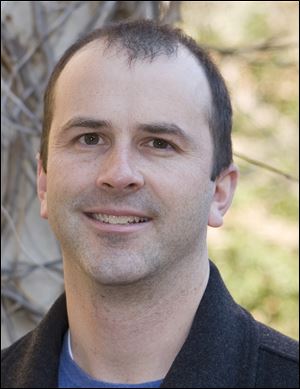
GUEST COLUMN
To clean up Lake Erie, restore wetlands, change farm practices
Such an undertaking will depend on the support of local landowners, persistence, and a good dose of political will
3/23/2014
Stanley
The Nature Conservancy applauds the International Joint Commission’s comprehensive evaluation of the nutrient-driven algal bloom problem that has plagued Lake Erie for several years.
We appreciate the way in which this American-Canadian organization approached the issue, knowing that a solution must address a complex mixture of social, economic, and environmental interests. Its new report offers recommendations that can inform the debates we must have and the decisions we must make.
We agree with many of the commission’s recommendations. One that stands out is the deployment of nature to help solve the problem: The commission proposes the addition of 2,600 coastal wetland acres — a 10 percent increase — by 2030 to help reduce nutrient pollution.
Adding such acreage is a laudable beginning, building on work already under way in the western Lake Erie basin. It lays a base for going even further in decades to come.
A partnership of public agencies and private conservation groups, including the Nature Conservancy, is engaged in projects that will restore about 2,500 acres of marsh in or near the Ottawa National Wildlife Refuge. These efforts are receiving funding from the federal Great Lakes Restoration Initiative.
Based on a recent analysis of wetlands restoration by the conservancy, this work could be scaled up significantly. Coastal wetlands could play a larger role in helping to reduce nutrient pollution, while expanding habitat for fish, birds, and other forms of wildlife that help drive Lake Erie’s $10 billion tourism industry.
Restoring coastal wetlands on a large scale will require local community support, technical know-how, resources, and cooperation between the public and private sectors. Such a significant undertaking will depend on the support of local landowners, persistence, and a good dose of political will.
The commission’s report also recognizes that if we’re to resolve the algae problem, we must find ways to encourage changes in farming practices, especially in the Maumee River watershed. This work must proceed even as agriculture is pressed to meet growing food and energy demands throughout the world. This, too, will require collaboration among all stakeholders.
The four R’s of nutrient stewardship — applying the right source of fertilizer, in the right place, at the right time, using the right rate to optimize efficiency — are emerging as a best-management standard. They are promoted by professional organizations, businesses, government agencies and conservation groups.
As a partner in this program, the Nature Conservancy took part in the kickoff last week in Toledo of the 4R Nutrient Stewardship Certification program — a voluntary, industry-led effort to encourage the adoption of 4R principles in the Maumee watershed.
In addition to the commission’s report, the conservancy’s Lake Erie biodiversity conservation strategy addresses agricultural best practices, drainage options, policies, and programs that aim to reduce nutrient runoff. We recognize that threats to fish and coastal habitats because of phosphorus loading can diminish economic values associated with public and private property, tourism, beach-going, and fishing revenue.
We applaud and recognize attainable solutions, but we also challenge ourselves and other preservation groups to stretch conservation goals to protect this freshwater resource.
Bill Stanley is assistant state director of the Nature Conservancy in Ohio, a charitable environmental organization.